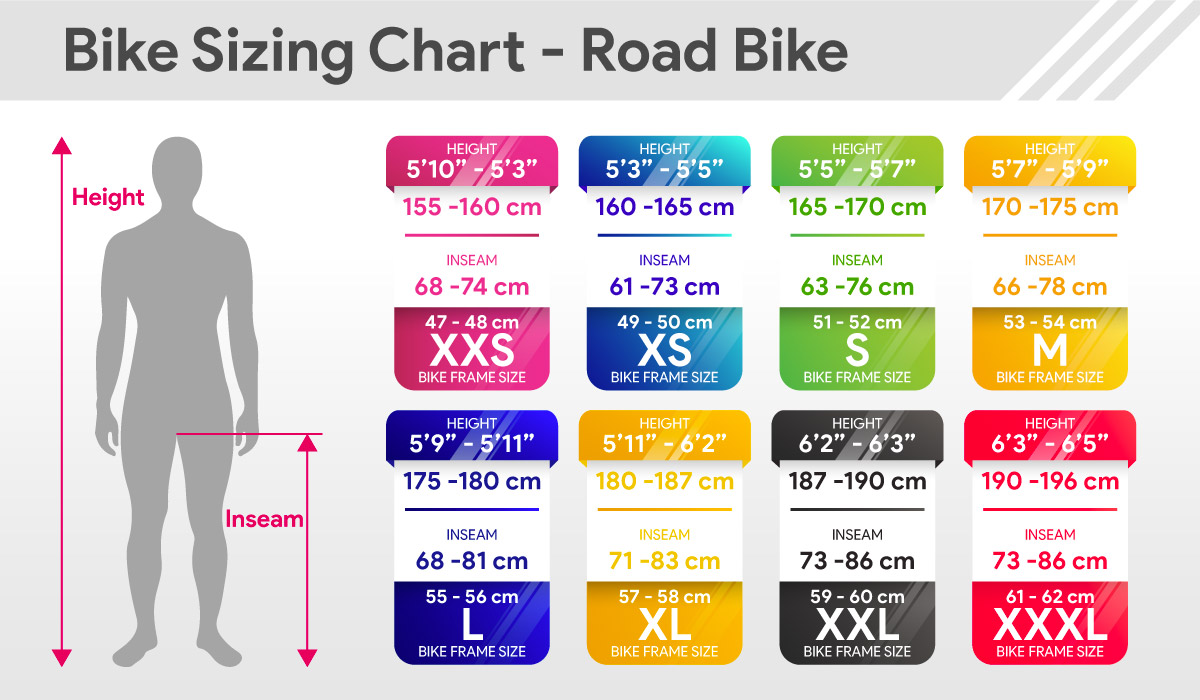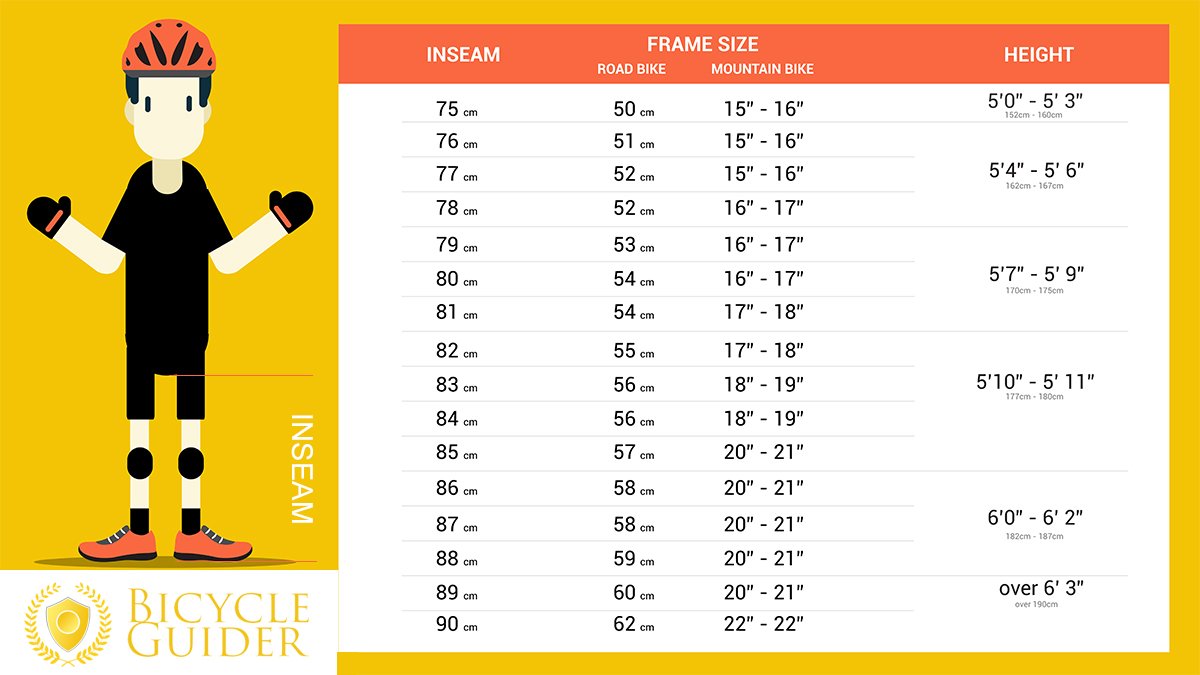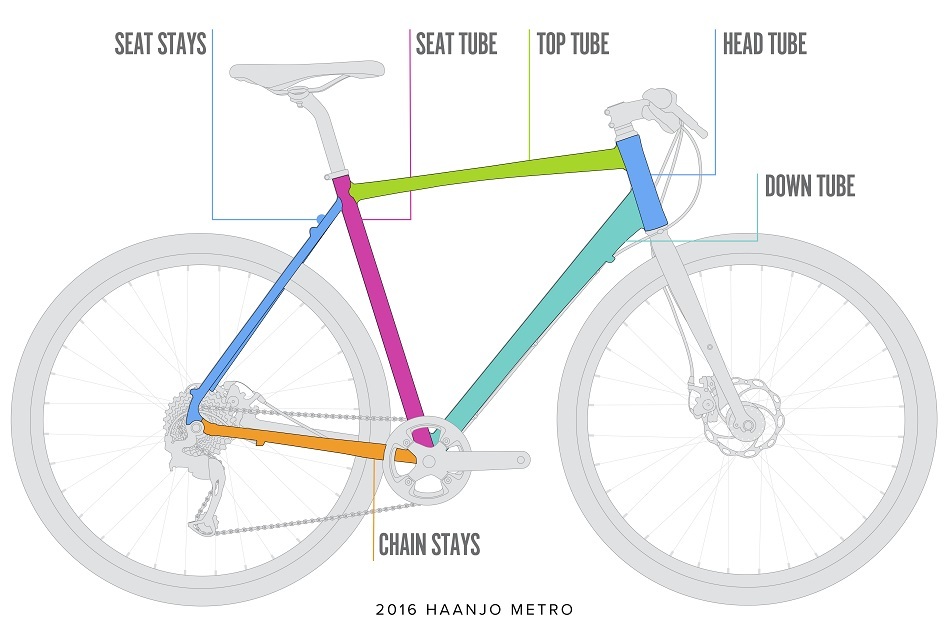Understanding the Importance of Proper Mountain Bike Sizing
Choosing the right mountain bike size is crucial for any rider, as it significantly impacts comfort, control, and performance. A proper bike fit is essential for preventing injuries and enhancing the overall riding experience. A bike that is too small or too large can lead to discomfort, reduced control, and even increased risk of accidents. By finding the perfect fit, riders can enjoy a more enjoyable and safer riding experience, making the most of their time on the trails.
How to Measure Yourself for a Mountain Bike: A Step-by-Step Guide
To ensure a proper mountain bike fit, it’s essential to measure your body accurately. Follow these steps to gather the necessary measurements:
- Inseam length: Stand with your back against a wall, barefoot, and place a hardcover book between your legs, pressing it into your crotch. Make sure the book’s spine is touching the wall. Measure the distance from the top of the book to the floor.
- Torso height: While standing against a wall, measure the distance from the ground to the prominent bone at the base of your neck (the C7 vertebra). You can locate this bone by tilting your head forward and feeling for the bony protrusion at the back of your neck.
Once you have these measurements, you can compare them to mountain bike size charts (as discussed in the following section) to determine the ideal bike size for your body type. Keep in mind that these measurements are just a starting point, as individual preferences and riding styles may require additional adjustments. Consulting a professional bike fitter can provide more accurate measurements and personalized recommendations for your mountain bike fit.
Mountain Bike Size Charts: A Valuable Resource for Bike Sizing
Mountain bike size charts are essential tools for riders looking to find their perfect bike fit. These charts, provided by bike manufacturers, outline recommended bike sizes based on a rider’s height and, in some cases, inseam length. By comparing your measurements to the size chart, you can determine the ideal bike size for your body type. Here are some examples of popular bike brands’ size charts and the key measurements to consider:
Trek Mountain Bike Size Chart
Trek’s mountain bike size chart primarily uses rider height to determine the appropriate bike size. Their chart recommends the following sizes:
- 5’2″ – 5’5″: Extra Small (XS)
- 5’5″ – 5’8″: Small (S)
- 5’8″ – 6’0″: Medium (M)
- 6’0″ – 6’3″: Large (L)
- 6’3″ and taller: Extra Large (XL)
Specialized Mountain Bike Size Chart
Specialized’s mountain bike size chart takes both rider height and inseam length into account. Their chart recommends the following sizes:
- 5’1″ – 5’4″ and 27″ – 29″ inseam: Extra Small (XS)
- 5’4″ – 5’7″ and 29″ – 31″ inseam: Small (S)
- 5’7″ – 5’10” and 31″ – 33″ inseam: Medium (M)
- 5’10” – 6’1″ and 33″ – 35″ inseam: Large (L)
- 6’1″ and taller and 35″ and taller inseam: Extra Large (XL)
When using mountain bike size charts, remember that they are general guidelines. Individual preferences, flexibility, and riding styles may require adjustments to the recommended bike size. Consulting a professional bike fitter can help ensure a perfect fit for your mountain bike.
Different Mountain Bike Types and Their Ideal Sizing
Mountain biking encompasses various disciplines, each with unique characteristics and sizing considerations. Understanding these differences can help riders find their ideal bike size and make necessary adjustments for their specific riding style.
Cross-Country (XC) Mountain Bikes
Cross-country bikes are designed for efficiency, speed, and agility on smooth, flowing trails. They typically have a more upright riding position and shorter wheelbase, making them highly maneuverable. When sizing an XC bike, focus on a comfortable reach to the handlebars and a saddle height that allows for a smooth pedaling motion.
Trail Mountain Bikes
Trail bikes offer a balance between climbing efficiency and descending capability. They often have a slightly slacker head tube angle and longer wheelbase than XC bikes, providing increased stability at high speeds. When sizing a trail bike, ensure a proper fit by maintaining a comfortable reach to the handlebars and adjusting the saddle height for optimal pedaling efficiency and control during descents.
Enduro Mountain Bikes
Enduro bikes are built for aggressive all-mountain riding, with a focus on downhill performance. They typically have a longer wheelbase, slacker head tube angle, and more suspension travel than XC and trail bikes. When sizing an enduro bike, prioritize a comfortable cockpit setup for descending, with a slightly roomier reach to the handlebars and a saddle height that allows for easy maneuverability during steep, technical sections.
Downhill (DH) Mountain Bikes
Downhill bikes are designed explicitly for high-speed descents on rough, steep terrain. They have the longest wheelbase, slackest head tube angle, and most suspension travel of any mountain bike type. When sizing a DH bike, riders should focus on achieving a stable, balanced position with a low center of gravity. This often means a shorter stem, wider handlebars, and a lower saddle height to accommodate the bike’s aggressive geometry and increased stability during high-speed descents.
By understanding the unique sizing considerations for each mountain bike type, riders can make informed decisions about their bike fit and optimize their performance on the trails. Fine-tuning adjustments, such as saddle height and handlebar position, can further enhance the rider’s comfort and control, ultimately leading to a safer and more enjoyable mountain biking experience.
Mountain Bike Geometry: A Crucial Factor in Bike Sizing
Mountain bike geometry refers to the bike’s frame design and dimensions, which significantly impact the bike’s fit, handling, and performance. Understanding these key geometry concepts can help riders make informed decisions about their bike size and adjustments.
Reach
Reach is the horizontal distance from the center of the bottom bracket to the top of the head tube, where the handlebars connect. A longer reach provides a more stretched-out riding position, while a shorter reach results in a more upright position. Riders seeking a more aggressive, aerodynamic stance should look for bikes with a longer reach, while those prioritizing comfort may prefer a shorter reach.
Stack
Stack is the vertical distance from the center of the bottom bracket to the top of the head tube. A taller stack results in a more upright riding position, while a shorter stack leads to a lower, more aggressive position. Riders should consider their flexibility, riding style, and comfort preferences when evaluating stack measurements.
Head Tube Angle
The head tube angle is the angle formed by the head tube and the ground. A slacker head tube angle (58-64 degrees) places the front wheel further in front of the rider, improving stability at high speeds and during steep descents. A steeper head tube angle (65-70 degrees) positions the front wheel closer to the rider, enhancing maneuverability and climbing efficiency.
Chainstay Length
Chainstay length is the distance from the center of the bottom bracket to the rear axle. A shorter chainstay length (400-420mm) creates a more playful, agile bike, while a longer chainstay length (430-450mm) provides increased stability and better traction during climbing. Riders should consider their riding style and the type of terrain they will be tackling when evaluating chainstay length.
By understanding these key mountain bike geometry concepts, riders can make more informed decisions about their bike size and adjustments. A proper bike fit, influenced by mountain bike geometry, leads to improved comfort, control, and performance, ultimately enhancing the overall riding experience.
The Role of Suspension in Mountain Bike Sizing
Suspension plays a significant role in a mountain bike’s fit, handling, and overall performance. By understanding the relationship between suspension components and bike sizing, riders can make informed decisions about their bike’s setup and adjustments.
Suspension Travel
Suspension travel refers to the maximum distance the suspension can compress. Cross-country bikes typically have shorter suspension travel (80-120mm) for efficiency, while downhill bikes have longer suspension travel (160-200mm) for better control on rough terrain. Riders should consider their riding style and the type of trails they will be tackling when evaluating suspension travel.
Fork Offset
Fork offset, also known as fork rake, is the horizontal distance between the steering axis and the center of the front wheel. A larger fork offset (50-60mm) results in quicker steering and a shorter wheelbase, while a smaller fork offset (37-45mm) provides more stability and a longer wheelbase. Riders should consider their skill level, riding style, and the terrain they will be riding when evaluating fork offset.
Rear Suspension Design
Rear suspension design significantly impacts a mountain bike’s fit and handling. Common rear suspension designs include single-pivot, four-bar linkage, and dual-link suspension systems. Each design has its unique characteristics, affecting factors such as pedaling efficiency, bump absorption, and suspension kinematics. Riders should consider their riding style, preferences, and the type of terrain they will be riding when evaluating rear suspension designs.
By understanding the relationship between suspension and bike sizing, riders can optimize their bike’s performance and fit. Adjusting suspension settings, such as rebound, compression, and sag, can further fine-tune the bike’s handling and rider comfort. A proper bike fit, influenced by suspension considerations, leads to improved comfort, control, and performance, ultimately enhancing the overall riding experience.
Fine-Tuning Your Mountain Bike Fit: Adjusting Saddle Height, Handlebar Position, and More
A properly fitted mountain bike can significantly improve your riding experience, offering better control, comfort, and performance. Here are some tips and tricks for fine-tuning your bike fit, including adjusting saddle height, handlebar position, and suspension settings.
Saddle Height
To set your saddle height, start by standing next to your bike. With your heel on the pedal, your leg should be almost straight at the bottom of the pedal stroke. When clipped in, there should be a slight bend in your knee, allowing for a comfortable, efficient pedaling motion.
Handlebar Position
Your handlebar position plays a crucial role in your bike’s handling and your overall comfort. To find the ideal handlebar height, consider your riding style and flexibility. A lower handlebar position provides better control and a more aerodynamic stance, while a higher handlebar position offers increased comfort and a more upright riding position.
Suspension Settings
Properly adjusting your suspension settings can significantly impact your bike’s performance and handling. Start by setting your sag, which is the amount your suspension compresses under your body weight. Most manufacturers provide recommended sag settings, typically around 20-30% of the total suspension travel. Adjust rebound and compression damping to control the speed at which your suspension returns to its full extension and to fine-tune the bike’s handling and ride quality.
Additional Adjustments
Other adjustments, such as stem length, handlebar width, and brake lever position, can further refine your bike fit. Experiment with these adjustments to find the perfect balance between control, comfort, and performance. Remember, small adjustments can make a big difference, so test each change thoroughly before making further modifications.
By fine-tuning your mountain bike fit, you can unlock its full potential and enjoy a safer, more comfortable, and more enjoyable riding experience. Always prioritize safety and make adjustments gradually, testing each change before moving on to the next. With patience and persistence, you can dial in your bike fit and maximize your performance on the trails.
When to Consider a Custom Mountain Bike Frame
A custom mountain bike frame can offer numerous benefits for riders with unique body proportions, specific riding styles, or those seeking a truly personalized bike. By understanding when a custom frame might be worth considering, you can make an informed decision about your next bike purchase.
Unique Body Proportions
Riders with exceptional height, weight, arm length, or leg length may find it challenging to achieve a comfortable and efficient fit on a production mountain bike. A custom frame can accommodate these unique body proportions, ensuring a perfect fit and improving comfort, control, and performance.
Specific Riding Styles
Different mountain bike disciplines require unique bike geometries and setups. For example, downhill riders may prefer a slacker head tube angle and longer wheelbase for stability, while cross-country riders might opt for a steeper head tube angle and shorter wheelbase for agility. A custom frame allows riders to tailor the bike’s geometry to their specific riding style and preferences.
Desire for Personalization
For some riders, the allure of a one-of-a-kind bike is too strong to resist. A custom frame offers the opportunity to create a truly unique mountain bike, reflecting the rider’s personality and style. From custom paint jobs to unique frame materials and components, a custom frame can be tailored to meet your every desire.
Considerations and Costs
While a custom mountain bike frame offers numerous benefits, it’s essential to consider the costs and potential drawbacks. Custom frames can be significantly more expensive than production frames and may require a longer lead time. Additionally, riders should ensure they are working with a reputable framebuilder, as the quality and craftsmanship of a custom frame can vary widely.
By understanding the benefits of a custom mountain bike frame and when it might be worth considering, riders can make informed decisions about their next bike purchase. A custom frame can provide a perfect fit, improved performance, and a truly unique riding experience for those willing to invest in this premium option.








